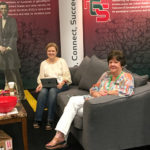If a blogger writes a post revealing the birth date of Great Aunt Martha, the worst result might be Auntie’s chagrin in discovering discover that the secret of her youth is “out.” The potential outcome, however, of posting family photos on a personal blog is unfortunately much more sinister.
Jenni Brennan is a Massachusetts mother who discovered that a photo of her smiling son was apparently lifted from her family blog and used as part of an adoption scam advertised on Craigslist. After an email alerted her to the scam, Jenni responded to the ad posing as a potential adoptive parent and received a picture of her son, along with a request for $300 to begin the adoption. The case is now under investigation.
While the actual physical risk here may be small, the sense of violation and exposure is quite real.
An ongoing Flickr discussion on posting children’s photographs offers another chilling look at who may be looking at your children, and why. Self-avowed voyeurs have found a treasure trove of titillating children’s photographs on public photo-sharing sites, and a strangely supportive parent-body to support their taste. Some users like muddylemon became alarmed when they discovered certain photos from their image file were scoring thousands upon thousands of hits; after following the trail of those marking the pictures as “favs,” parents decided to change the images from Public to Private.
Yet another prevalent concern for family bloggers is the growing business of children’s identity theft . In 2007, the Federal Trade Commission estimated that about 400,000 children per year were victims of identity theft, according to CBS News. Children make especially good targets, it seems, because they have a clean credit record. Teens can be cautioned not to give out personal information, but what about infants and young children? Family bloggers might not post a social security number, but stories often reveal a child’s full name, mother’s maiden name, and address.
Personal bloggers can minimize exposure to abuse of their family information by adopting a few tactics:
- Protect children by posting photos and anecdotes on a password-protected blog or website.
- Use low-resolution and/or watermarked images to deter easy pilfering.
- Restrain from publishing any personal information on a public blog.
Julie Brennan never expected to see her son “up for adoption,” and muddylemon didn’t think his son’s bathtub photos would become “hot hits” at Flickr. The Brennans now blog at a password-protected site and muddylemon has marked his son’s photos as Private.
Family history bloggers can also protect the use of their family photographs and information by devising a Standard of Privacy for their blog. Many bloggers already work with a loose, unwritten guideline, but the exercise of forming a written statement will help firm up your thoughts and make it easier to decide what material to post. Bloggers might consider
- the purpose of the site and what level of access is desired; public or password-protected?
- resolution to use in posting images; watermark or other protection?
- whether or not to invoke Copyright or Creative Commons licensing
- what level of individual to write about or include in photos: only non-living, only photos/information 25 years or older, only adults over age 21?
- what level of privacy to afford when writing about other individuals: first names, initials, no maiden names? It is common for family history bloggers to omit full names and addresses of living individuals. It is also courteous to ask permission before posting photographs of family members, no matter how innocuous the image may seem.
- how much personal information to reveal; a family photo with home address clearly displayed, children on the front school steps, pets and their names?
A Blog Standard of Privacy can be as casual as a bullet-list tacked above your desk, or a formal as a typed statement posted on your blog. It can evolve as issues arise and decisions are made about what to include and not include on your site.
Not everyone will agree with the need for such prudence, of course, but many careful genealogy researchers have considered the evidence and chosen to err on side of caution whenever an individual’s privacy is at stake. You will find them blogging on a variety of focused topics, with only an occasional discrete mention of family or personal life. It doesn’t mean they “have no life,” just that Real Life is separate from Virtual Life.
Further reading –





